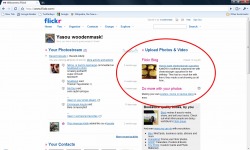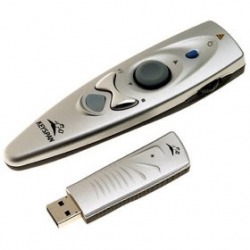
So I was fooling around on Flickr today, when I stumbled on the Flickr Blog. (Okay, so that's something right there I didn't know - I had no idea that Flickr has a blog. It would definitely be worthwhile to read this periodically to find out what cool things people are doing on Flickr.)Anyway, this blog entry was about how a woman named Kate and her boyfriend had figured out how to make cupcakes that look like cheeseburgers and furthermore, they had put together step-by-step instructions with photographs on how to do it in a slideshow on Flickr.

This strikes me as important for several reasons, not the least of which being, "Oh my God! You can make cupcakes that look like Cheeseburgers?! Is that the coolest thing ever?
(No - this is - but the cheeseburger cupcakes are still pretty spectacular.)Next, the idea of using a Flicker slideshow to put together a set of instructions seems like a very powerful tool for the classroom. One immediate use that springs to mind is that a teacher could put together step-by-step instructions for his or her students, but even more intriguing is the idea of students putting together the instructions. One area of student Literacy that is very challenging to a lot of teachers is non-fiction. Children will buy into reading and writing narratives pretty readily, but getting them to invest themselves something less plot-driven can be quite a bit more difficult. "How-To" writing is often specified in school or state curricula. Having a class of younger students break down a complex task into individual steps would be valuable in and of itself, but then letting each student or team of students take and edit pictures, then post them with written instructions could be really engaging. This would also address the goal that many schools have of getting students to write for a larger audience. It might also be a good way to get reluctant writers more engaged - I'm imagining a not-very-academic boy putting together a step-by-step explanation of how he gaps the spark plugs on his snowmobile or eats a hot slice of pizza before his brothers can get their hands on it.This would also be a good way to document a Science, Health, Art or Phys-Ed project.I'm also thinking it would be a creative way of meeting the requirements in some students' IEPs.

Plus - you'd have the possibility of cupcakes that look like cheeseburgers!

Toy #1
A Remote Control For Your Computer
Okay - the question is a natural one: Why?
"Isn't all this technology distancing me enough from the rest of my life already? Why would I want to get even MORE remote?"
I can answer that with two words: "Teenaged Boys".
If you've been in the classroom for any length of time, you know that it is a very bad idea to turn your back on certain students. If you have any "difficult" boys in your class (and really, isn't "difficult" the most flattering way of describing some of your boys?), you know that the idea of sitting at a computer in a dark room with your back to the students is basically courting catastrophy.
Yes, of course there are ways to contain the damage. You can pause the slideshow or movie that you are showing periodically to ask pointed questions of particular students to make sure that they are paying attention. You can spin around and give the Evil Glare of Doom to somebody each time you hear a suspicious noise. You could make one of the worst offenders your special AudioVisual Assistant.
Ultimately though, you still end up in a darkened room chained to a computer with your back turned to most of your students.
Now, imagine a remote control that allows you to walk around BEHIND your students as they watch your brilliantly dorky PowerPoint presentation. You've heard a distressing amount of whispering and giggling from one corner of the room as you've been showing pictures of Lake Titicaca or lecturing on Manhattan Schist. (Or maybe that only happens to me...) You can walk around and stand next to the Giggle Brothers and maybe even lean on the desk between them as you make your next point and effortlessly move on to the next slide.
Remote controls for your computer are reasonably inexpensive - usually under $100. (I got the one I use everyday for about $40 at Radio Shack.) They can range from the really simple to the extremely complex, from unbelievably easy to use to very, very difficult.
I've only tried a few different models - mostly because I really like my original one - a Keyspan PR-US2 Presentation Remote. I really like its simplicity; it has an almost zen-like lack of cool features. It has a left-click button (which corresponds to the left button on your mouse), a right-click button (which opens up all the magic possibilities of right-clicking), a small pad that moves a pointer, much like a mouse, and a laser-pointer.
I like it - aside from the laser-pointer, it doesn't do anything a mouse doesn't do, but it is basically idiot-proof, which is pretty much what I want it to be proof against. The downside of this particular model is that the mousepad is twitchy and takes some getting used to.
Okay, a LOT of getting used to.
The weird thing is, having put in the effort of learning how to use my twitchy little blue button (Okay - that sounds a little dirty, but it is better than the word "knob", which is the only other one that springs to mind.) I really don't feel as comfortable using the other, theoretically more user friendly models I've tried.
There are rumors though, of a new remote that is sleek, exotic, sexy and sophisticated - in other words, everything I'm not and would like to be. There have been press releases. There have been reports on technology podcasts. I covet this remote. Tragically, it doesn't seem to exist yet.




 RSS Feed
RSS Feed